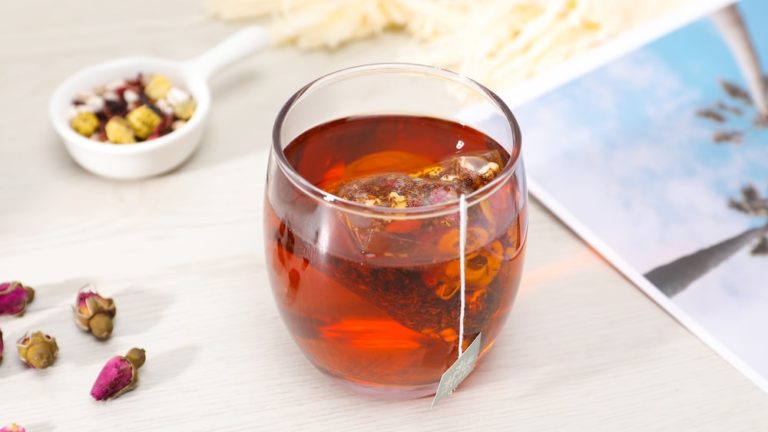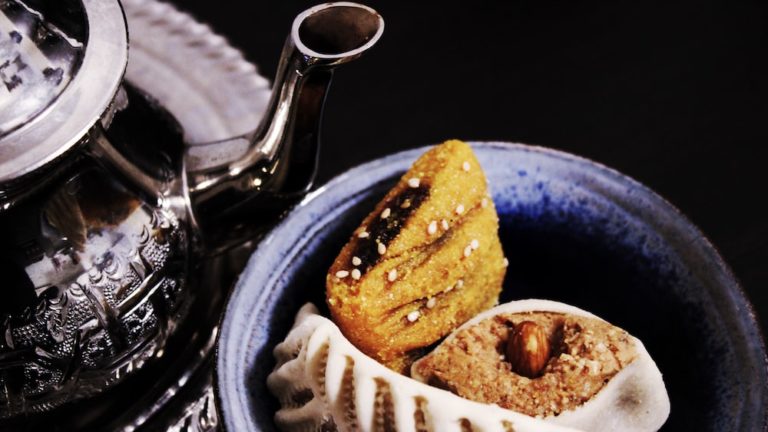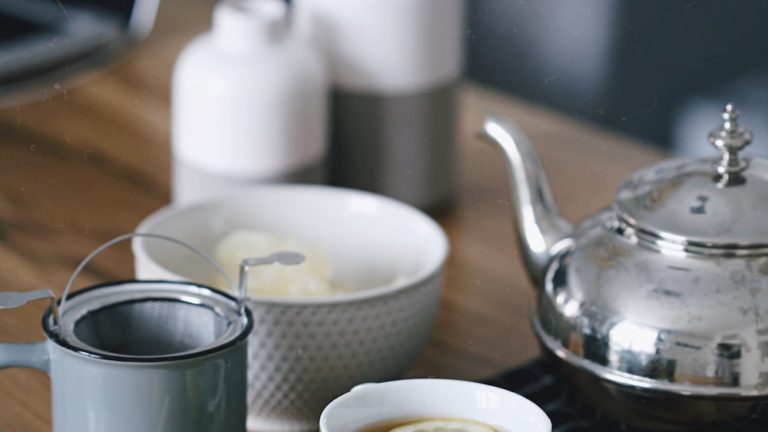Discover Oolong Tea Calories: Nutritional Facts and Benefits
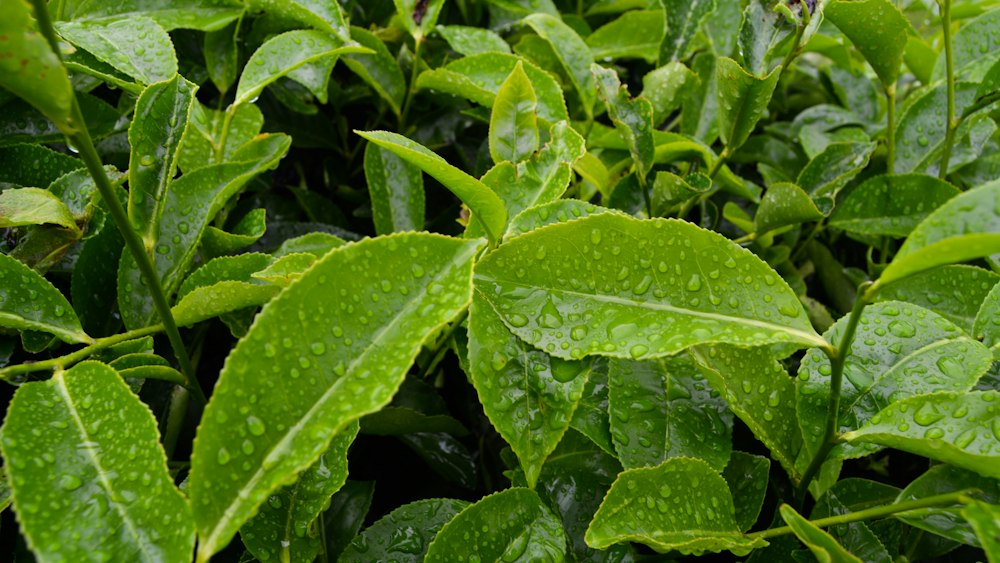
Discover Oolong Tea Calories: Nutritional Facts and Benefits
Imagine embarking on a journey where every sip of your beverage not only tantalizes your taste buds but also whispers a tale of ancient traditions and unveiled secrets of wellness. Yes, we’re talking about oolong tea – an enchanting elixir that has been a symbol of serenity and sophistication in the East for centuries. But it’s not just about the soothing aroma or the complex flavor profiles; the spotlight today is on oolong tea calories and the cache of benefits packed in each cup.
Key Points:
- Oolong tea is a semi-oxidized tea known for its rich history, complex flavors, and health benefits.
- The production of oolong tea involves careful plucking, withering, oxidation, rolling, and roasting.
- Oolong tea is low in calories, high in antioxidants, and contains vitamins and minerals.
- Drinking oolong tea may aid in weight management, boost metabolism, and improve heart health.
- Oolong tea offers a unique balance between green and black teas, appealing to a wide range of tea enthusiasts.
- Brewing oolong tea with attention to water quality, temperature, and steeping time can enhance its flavor and health properties.
- Oolong tea’s antioxidant properties may help prevent chronic diseases and promote overall well-being.
While the world of tea aficionados might quibble over nuances like oxidation levels or terroir, there’s a growing tribe of health-conscious gourmands keen on understanding what exactly goes into their cup. From its rich historical roots to the modern mug, oolong tea is not just a beverage – it’s a ritual, steeped in tradition and brimming with health potential.
So, let’s brew a pot, sit back, and delve deep into the heart of oolong tea, unraveling its mysteries from the nutritional facts to the hilltops of Fujian. Are you ready to explore how this ancient brew can be a modern marvel in your wellness routine? Because, my friends, there’s a whole lot more to oolong tea than just calories.
What is Oolong Tea?
Oolong tea is the chameleon of the tea world, nestled comfortably between green and black teas, borrowing a bit of character from each yet distinctively unique. This semi-oxidized tea boasts a spectrum of flavors and aromas, from sweet and floral to rich and woody, making it a fascinating subject for both connoisseurs and casual sippers alike. It’s a testament to the art of tea making, where precision meets tradition, crafting a cup that’s rich in history and overflowing with taste.
The Origin and Production of Oolong Tea
The tale of oolong tea begins in the cradle of Chinese tea culture, with its roots deeply entrenched in the majestic mountains and fog-laden fields of China and Taiwan. The production of oolong tea is nothing short of an art form, a ballet of timing, temperature, and technique, where leaves are carefully plucked, withered, and oxidized. However, it’s the degree of oxidation, carefully controlled by skilled tea masters, that defines the soul of oolong tea, deciding whether it leans towards the lightness of green or the depth of black tea.
The process doesn’t halt at oxidation; oolong tea leaves undergo a series of rolling and roasting steps, further enhancing the complexity of flavors. This meticulous crafting results in a bouquet of tastes and aromas, unique to each batch, making every sip a discovery. The origin and production of oolong tea are central to its character and health benefits, underlining the importance of tradition in crafting this exquisite brew.
The degree of oxidation, controlled by skilled tea masters, defines the soul of oolong tea and determines its unique flavors and aromas.
Different Varieties of Oolong Tea
Navigating through the varieties of oolong tea is akin to embarking on a culinary exploration, each type offering a unique passport to the terroirs of China and Taiwan. Let’s start with Tieguanyin, a gem from Fujian, China, known for its floral fragrance and a slightly sweet aftertaste. Then, there’s the Wuyi Rock oolong, a darker, highly oxidized variant, famous for its rich, smoky flavor – a bold contrast to Tieguanyin’s delicate notes.
Taiwan isn’t left behind in this oolong odyssey. The island is celebrated for its High Mountain oolong, an alpine treasure draped in mist and mystery, offering a lighter, more refreshing cup. Each variety, from the orchid notes of a lightly oxidized brew to the nutty warmth of a roasted one, presents a palate of experiences, making the exploration of oolong tea a never-ending adventure of taste.
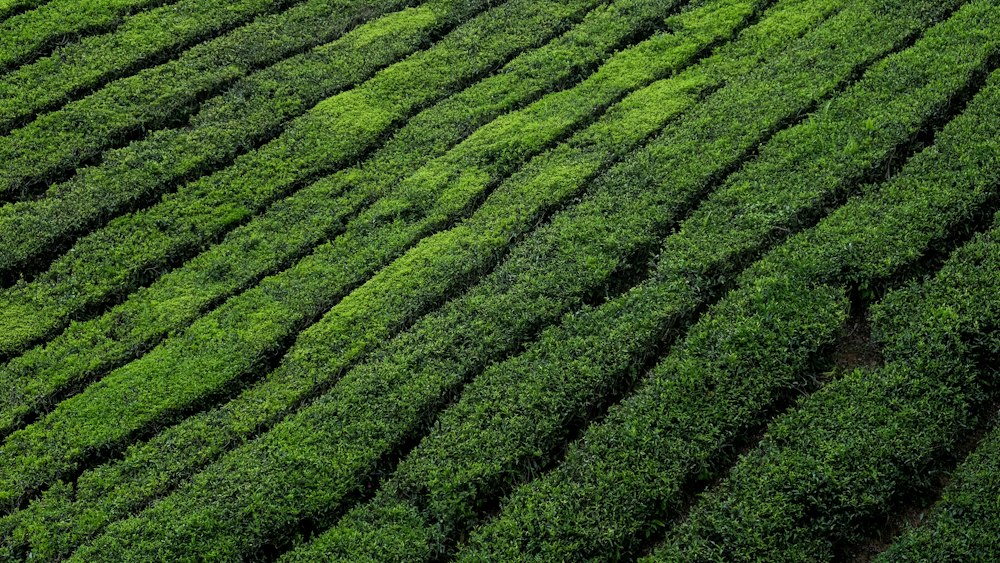
Nutritional Profile of Oolong Tea
Oolong tea strikes an impressive balance not just in flavor, but in its nutritional profile as well. It parades a low-calorie count while offering a cornucopia of antioxidants, vitamins, and minerals. This makes it a cherished choice among those looking to infuse their diet with substances that promote health and well-being, without the burden of high calorie content.
Calories in Oolong Tea
Charting the oolong tea calories, one finds it to be a virtually calorie-free drink when enjoyed plain. A standard 8-ounce cup contains a mere 2-3 calories, a negligible amount that makes oolong tea an ideal beverage for those monitoring their calorie intake. Given its rich flavor profile, it’s a refreshing alternative to sugary drinks for anyone looking to hydrate without compromising on taste or calorie count.
The calories in oolong tea are primarily derived from its minimal carbohydrate content, making it a weight management ally when consumed without sweeteners. From a nutritional standpoint, incorporating oolong tea into one’s diet can be a tasteful strategy to support weight loss goals while staying energized and hydrated.
Other Nutritional Components
While the calorie content in oolong tea is minimal, the beverage is anything but insignificant when it comes to nutritional value. Oolong tea is a treasure trove of antioxidants, notably polyphenols, which are instrumental in combating oxidative stress and supporting overall health. These bioactive compounds are not only champions at fighting free radicals but also play a significant role in metabolic regulation and disease prevention. [1]
Besides antioxidants, oolong tea offers a smattering of vitamins and minerals, including fluoride, magnesium, and potassium, contributing to dental health, muscle function, and electrolyte balance. The presence of amino acids, such as L-theanine, enhances cognitive functions and promotes relaxation. This rich cocktail of nutrients makes oolong tea a holistic beverage, aligning with the health goals of modern tea enthusiasts.
Health Benefits of Oolong Tea
The infusion of oolong tea into one’s diet is not just an act of indulging in a deeply aromatic and flavorful beverage but also a step towards embracing numerous health benefits. From aiding in weight management to combating chronic diseases, oolong tea appears to be a liquid asset in the wellness domain.
Weight Loss and Metabolism
The relationship between oolong tea and weight loss is supported by scientific research, suggesting the tea’s potential to enhance metabolic rate. Consuming oolong tea can contribute to an increase in energy expenditure and fat oxidation, making it a valuable component of a weight management strategy. The key metabolism-boosting properties of oolong tea are attributed to its concentration of polyphenols, which not only assist in breaking down fats but also prevent the accumulation of body fat.
Moreover, oolong tea has been observed to have a moderating effect on blood sugar levels, reducing the likelihood of spikes and crashes that can lead to snacking and overeating. This dual action – boosting metabolism and regulating sugar levels – provides a sensible approach to weight loss that complements dietary restraint and physical activity.
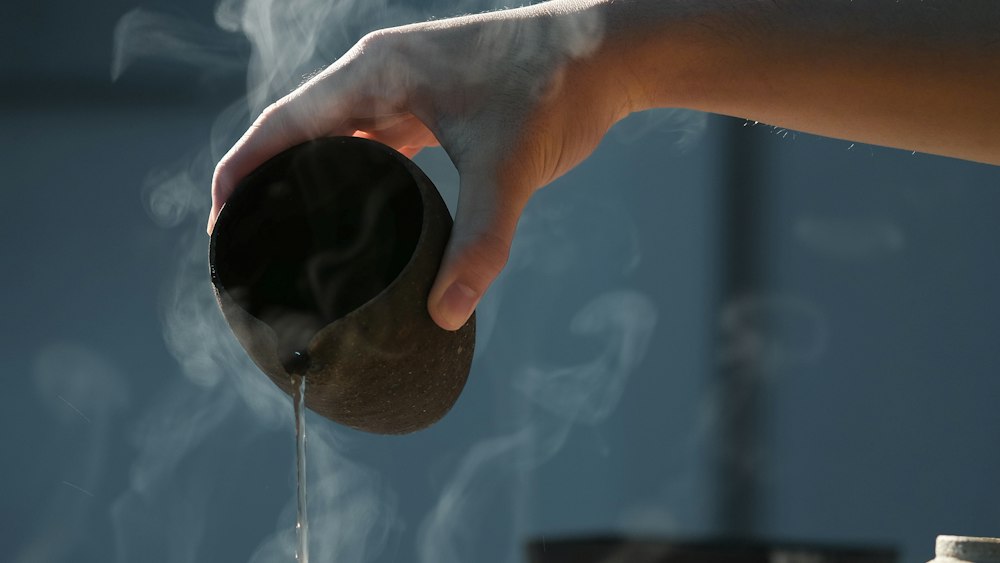
Consuming oolong tea can boost metabolism and regulate blood sugar levels, offering a sensible approach to weight loss.
Antioxidant Properties and Chronic Disease Prevention
The antioxidant properties of oolong tea are a beacon of hope in the prevention of chronic diseases. The polyphenols found in oolong tea, including theaflavins and catechins, are potent warriors against oxidative stress – a key player in the development of diseases like cancer, diabetes, and cardiovascular disorders. Through neutralizing harmful free radicals, oolong tea’s antioxidants help shield the body’s cells from damage, thereby lowering the risk of chronic disease. [2]
Empirical studies, such as those published in the Journal of Agricultural and Food Chemistry, have demonstrated oolong tea’s efficacy in inhibiting the growth of cancerous cells and improving glucose tolerance, highlighting its potential as a protective dietary component. These findings underscore the broader health-promoting capabilities of oolong tea, making it a beverage worthy of inclusion in a preventive health care regime.
Heart Health and Cholesterol Levels
Oolong tea has been linked with heart health, particularly in the regulation of cholesterol levels. This semi-oxidized tea is known to improve the lipid profile by reducing the levels of LDL (bad) cholesterol while potentially increasing HDL (good) cholesterol. Such effects contribute to decreasing the risk of heart diseases, including atherosclerosis and hypertension.
Research from the Chinese Academy of Medical Sciences indicates that regular consumption of oolong tea can result in a significant reduction in the risk of developing hypertension. By promoting vascular health and improving arterial function, oolong tea offers a non-pharmaceutical approach to maintaining cardiovascular health, emphasizing the importance of lifestyle and dietary choices in disease prevention.
How to Prepare Oolong Tea for Maximum Benefits
Preparing oolong tea in a manner that maximizes its health benefits and flavor profile is akin to performing a ceremony, a mindful process that respects the leaf’s integrity and history. The key to unlocking the full spectrum of taste and health properties lies in attention to detail – from the quality of water used to the steeping time and temperature.
Brewing the Perfect Cup
Brewing the perfect cup of oolong tea is less like making a standard cuppa and more like crafting a fine wine. It’s an art form that pays homage to the tea’s rich heritage and complex flavor profile. For starters, the quality of water is paramount – think of it as the canvas for this liquid masterpiece. Use spring water if available, or filtered water to lay the foundation.
The ideal temperature is another crucial factor. Unlike its tea siblings, oolong prefers a slightly cooler bath, longing for water heated to about 185°F (85°C). This gentle warmth coaxes out its unique flavor without bitterness. Additionally, the steeping time can profoundly influence the cup’s character. Begin with a one-minute steep and adjust to taste, recognizing that some varieties unveil their full majesty through multiple infusions.
Crafting the perfect cup of oolong tea requires attention to water quality, temperature, and steeping time to unlock its rich flavor profile.
Best Times to Drink Oolong Tea
When it comes to oolong tea, timing is not just a mere detail; it’s part of the experience. Start your day with a cup, not only to wake your senses but also to kickstart your metabolism, thanks to oolong’s ability to aid in weight management. However, avoid indulging late at night; its caffeine content might turn your sweet dreams into a wide-awake marathon of ceiling contemplation.
For those aiming to integrate oolong’s benefits into a health-conscious routine, consider sipping before or after a meal. The tea’s components have been suggested to reduce the uptake of fats and carbohydrates, thus acting as an ally in your fitness journey. And for moments of tranquility, the mid-afternoon beckons with an oolong pause – a perfect balance between the hustle and the calm before the evening rush.
Of course, the best time is also about personal comfort and enjoyment. Whether it’s a quiet morning ritual or a soothing prelude to the night, let your senses and preferences guide the way. Remember, the act of brewing and relishing in a cup can be a meditative practice in itself, offering a sanctuary amid the chaos of daily life.
Comparing Oolong Tea with Other Teas
When embarking on the epic journey through the world of teas, one finds that Oolong occupies a unique position between green and black tea. Its versatility in flavor, aroma, and nutritional benefits makes it a fascinating subject of comparison. As we delve deeper, let’s explore how it stands up against its green and black counterparts, shedding light on the nuances that make oolong tea a standout choice for many.
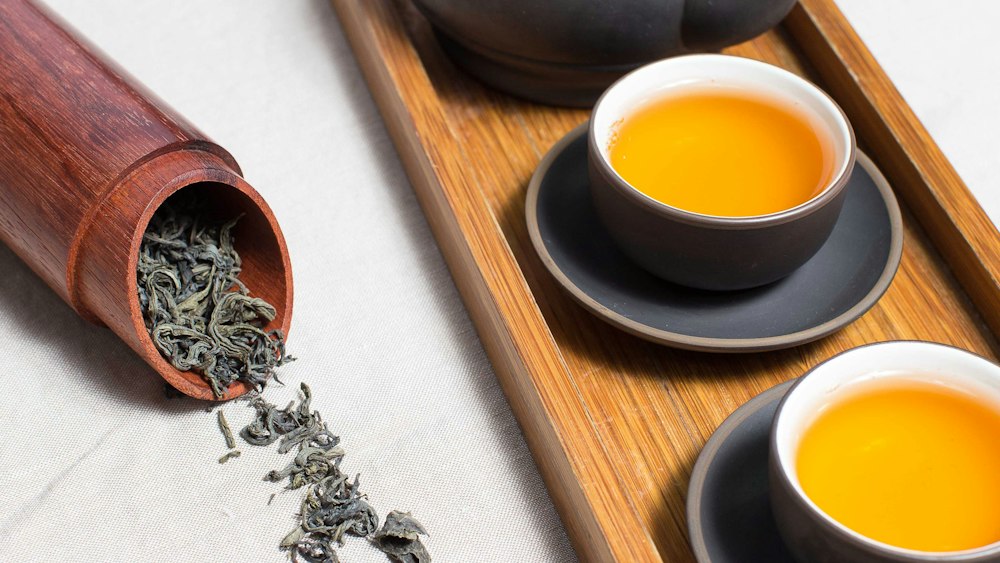
Oolong Tea vs. Green Tea
Oolong tea and green tea share a common origin, both hailing from the same Camellia sinensis plant, yet their paths diverge dramatically during processing. While green tea is celebrated for its minimal processing, oolong tea undergoes a unique partial oxidation process. This not only imparts a rich complexity of flavor but also affects its nutritional profile.
Research suggests that the antioxidant levels in oolong, although impressive, may be surpassed by the extremely high levels found in green tea. However, oolong compensates with its subtle flavors and the ability to strike a perfect balance between a light, floral green tea and a robust, malty black tea. Plus, its potential to aid in weight management and metabolism enhancement is a point of interest in scientific studies.
When considering caffeine content, green tea is typically on the lower end of the scale compared to oolong. This makes oolong a suitable choice for those seeking a middle ground of stimulation, without venturing into the robustness of black teas. In essence, oolong tea presents a harmonious blend of characteristics, appealing to a broad spectrum of tea enthusiasts.
Oolong tea strikes a perfect balance between the lightness of green tea and the robustness of black tea, offering subtle flavors and potential health benefits.
Oolong Tea vs. Black Tea
The main distinction between oolong tea and black tea lies in their processing: oolong is partially oxidized, whereas black tea is fully oxidized. This fundamental difference yields a spectrum of flavor profiles, ranging from the light, floral notes characteristic of oolong to the bold, deep tones of black tea.
Black tea is renowned for its hearty flavor, which stands up well to milk and sugar, a tradition embraced by cultures around the globe. However, for those keen to explore the subtleties of tea without such additions, oolong offers a compelling alternative. Its partial oxidation allows for a greater diversity of tastes and aromas to be expressed, making each sip a veritable journey through varied landscapes of flavor.
Interestingly, while both teas boast a bevy of health benefits, oolong tea’s metabolic enhancing properties and its role in weight management strategies have captured the interest of health and wellness communities. Though both can contribute positively to heart health and offer antioxidant properties, oolong’s unique processing might offer nuanced benefits that are still being uncovered by scientific research.
FAQs
1. How many calories are in a cup of oolong tea?
In a cup of oolong tea, there are virtually zero calories, making it an excellent choice for those monitoring their caloric intake.
2. Can drinking oolong tea help with weight loss?
Drinking oolong tea can help with weight loss, as it has been found to enhance metabolism and fat oxidation.
3. Are there any side effects of drinking oolong tea?
While oolong tea is generally safe, excessive consumption may lead to side effects due to its caffeine content, such as insomnia or digestive issues.
4. How does oolong tea compare to other types of tea in terms of health benefits?
Oolong tea stands out for its metabolic boosting properties and rich antioxidant content, offering a unique blend of health benefits compared to other teas.
Conclusion
Embarking on the journey of understanding oolong tea, from its complex production process to its nuanced flavors and the healthful bounty it offers, leads us to appreciate not just a beverage but a vibrant tapestry of culture, science, and wellness. The exploration of oolong tea calories reveals a drink that fits seamlessly into a health-conscious lifestyle, while its comparison with green and black teas underscores its unique position in the broad spectrum of tea choices.
Oolong tea manages to bridge worlds – offering an intricate dance of flavors and aromas that cater to both the refined palate and the health-savvy individual. Its role in enhancing metabolism and contributing to a balanced wellness routine further cements its standing as a beverage worthy of attention.
As we conclude this whisk through the world of oolong, remember that each cup is an invitation to savor the moment, to appreciate the delicate balance of tradition and innovation that oolong tea represents. Whether you’re seeking refreshment, wellness, or a touch of serenity, oolong is a companion ready to meet you wherever you are on your journey. Embrace the sip, and let it lead you to new discoveries and gentle revelations. Until next time, steep well and savor the journey.
Warmly,
Zoe
References
1. Health Benefits and Chemical Composition of Matcha Green Tea: A …. Dec 27, 2020 … … metabolism, may support the regulation of metabolic disorders [35]. … bioactive compounds regulating inflammatory processes attenuates the …
2. An update on healthspan and lifespan enhancing attributes of tea …. Moreover, experimental and clinical evidence suggesting health beneficial effects of tea phenols in the management of chronic human disorders such as diabetes [ …

